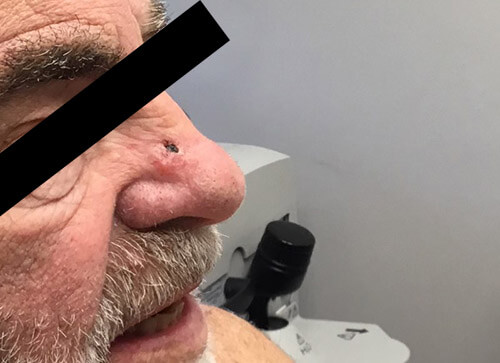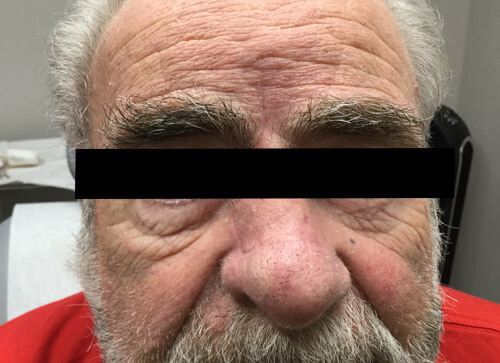Mohs Surgery
Mohs micrographic surgery (commonly known as Mohs surgery) is a precise technique to remove skin cancer developed by Dr. Frederic Mohs in 1938. Mohs surgery is the most advanced and effective method for removing a variety of skin cancer types, especially skin cancers in cosmetically sensitive or functionally important areas, including around the eyes, nose, lips, ears, scalp, hands, feet, or genitals. Mohs surgery is also indicated for other areas on the body if the skin cancer is of a larger size, not well-defined, or recurrent.
There are several advantages to removing skin cancers with Mohs surgery. The use of a mapping technique and microscopic control allow for all of the surgical margins to be examined at the time of the procedure by a dermatologic surgeon with formal training in the Mohs technique. As a result the surgeon can identify areas within the skin involved by the cancer that otherwise would not be visible to the naked eye. This precise skin cancer removal method preserves the most of the uninvolved normal skin, minimizing the resulting scar. Mohs surgery also offers the highest cure rate that reaches 99% for a skin cancer that hasn’t been treated before.
What to Expect during Mohs Surgery
Mohs surgery is performed as an outpatient procedure in the office under local anesthesia. This means that the area to be treated will be numbed by an anesthetic injected into the skin, and you will be awake. Mohs surgery typically starts early in the morning and is completed the same day, depending on the extent of the skin cancer and if any reconstruction is needed.
During Mohs surgery, a thin area of normal skin is removed around what is visibly left of the skin cancer. The tissue is then prepared and examined under the microscope by the surgeon to ensure all of the skin cancer has been removed. Each layer removed is referred to as a “stage”.
Detailed maps are also drawn of the area of the skin cancer removal. If any skin cancer remains, it will be removed precisely where it was detected and again analyzed under the microscope. This process is repeated until the skin cancer is removed in its entirety. The number of stages performed depends on the size and depth of the skin cancer. On average, most people will require 1-3 stages to be performed. In between each stage you will have a temporary bandage over the surgical site and will wait approximately 1 hour for the tissue to be processed and examined. Although your individual visit might be shorter, you should allow for at least 4 hours for your Mohs procedure.
Once all of the skin cancer has been removed, the surgeon will discuss options for repairing the wound to allow for the best functional and cosmetic outcome. These options may include allowing the wound to heal on its own (healing by secondary intention), closing the wound with stitches, taking a skin graft from another area of the body (for a larger or more complicated wound), and rarely, referral to a reconstructive specialist. Most often, repair will happen the same day of the Mohs surgery procedure. Following the repair, a dressing will be applied and you will be given specific instructions on wound care.



